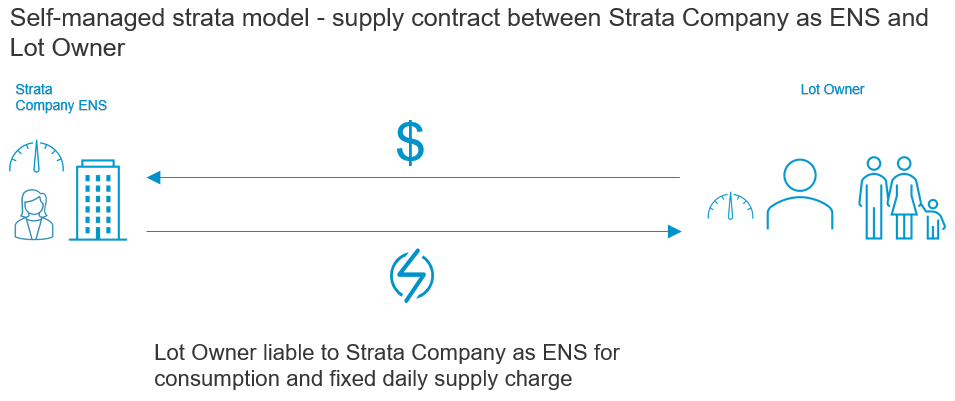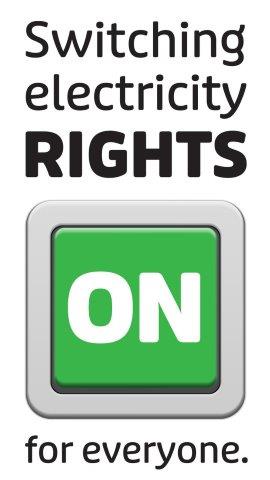These case studies are examples of typical business models that Energy Policy WA understands are being used in embedded networks in Western Australia, and that may fall under the Voluntary Embedded Networks Code of Practice. They are not representative of all business models used and are not to be relied on to understand how any specific embedded network is operated.
The owners of lots within a residential strata complex (the strata company, represented by the council of owners) own and manage the embedded network infrastructure (internal wiring, meters, and any distributed energy resources (DER) such as solar, batteries and/or electric vehicle chargers).
The strata manager acts as agent for the strata company in managing contracts with third parties for matters such as maintenance, on-site electrical work and periodic meter readings.
The strata company procures electricity from the main grid at the master meter for the strata complex and is responsible for on-selling electricity to occupants. It sets the electricity price by reference to the costs it pays (for electricity procurement at the master meter, amortisation of the DER costs and costs of managing the embedded network), in order to share the financial benefits with occupants.
Electricity bills are issued by the strata manager as agent for the strata company. Lot owners also contribute to common area electricity costs via their strata fees.
The self-managed strata model may also apply in a non-residential embedded network.
Who should register as the ENS under the Voluntary Embedded Networks Code?
The strata company should register as the embedded network seller (ENS).
Why?
The strata company:
- holds the contract to purchase electricity at the master meter for the embedded network;
- makes the decision about how to charge occupants for electricity and how generation from DER is allocated (e.g. solar generation used to offset common area electricity usage); and
- manages all aspects of the embedded network operation itself.
If the strata company engages third party agents to perform any role associated with the operation of the embedded network (e.g. meter reading or issuing bills) it must ensure that those contracts allow the strata company to fulfil its obligations.




